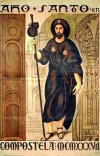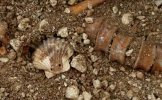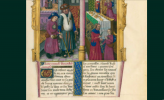Jeff Crawley
Veteran Member
- Time of past OR future Camino
- A "Tourigrino" trip once Covid has passed, so 2023
A little bit of whimsy for you:
My daughter was looking up a medieval reference the other day and came upon this picture:
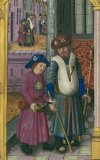
It looks like the taller pilgrim has two scallop shells on his hat - perhaps a second time on the Camino?
The bag he is wearing is quite interesting too - she suggests it is a Martebo sack (named after a church in Sweden where it can be seen on a stone carving). There would be a second compartment on the pilgrim's back to balance the weight. Basically a larger version of the double ended market wallet (the IKEA Frakta bag of the Middle Ages)
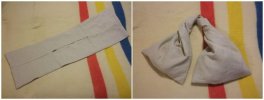
so some good came out of three year's study of medieval history after all!
PS - could that possibly be a rice cooker hanging around the younger pilgrim's neck?
My daughter was looking up a medieval reference the other day and came upon this picture:

It looks like the taller pilgrim has two scallop shells on his hat - perhaps a second time on the Camino?
The bag he is wearing is quite interesting too - she suggests it is a Martebo sack (named after a church in Sweden where it can be seen on a stone carving). There would be a second compartment on the pilgrim's back to balance the weight. Basically a larger version of the double ended market wallet (the IKEA Frakta bag of the Middle Ages)

so some good came out of three year's study of medieval history after all!
PS - could that possibly be a rice cooker hanging around the younger pilgrim's neck?












